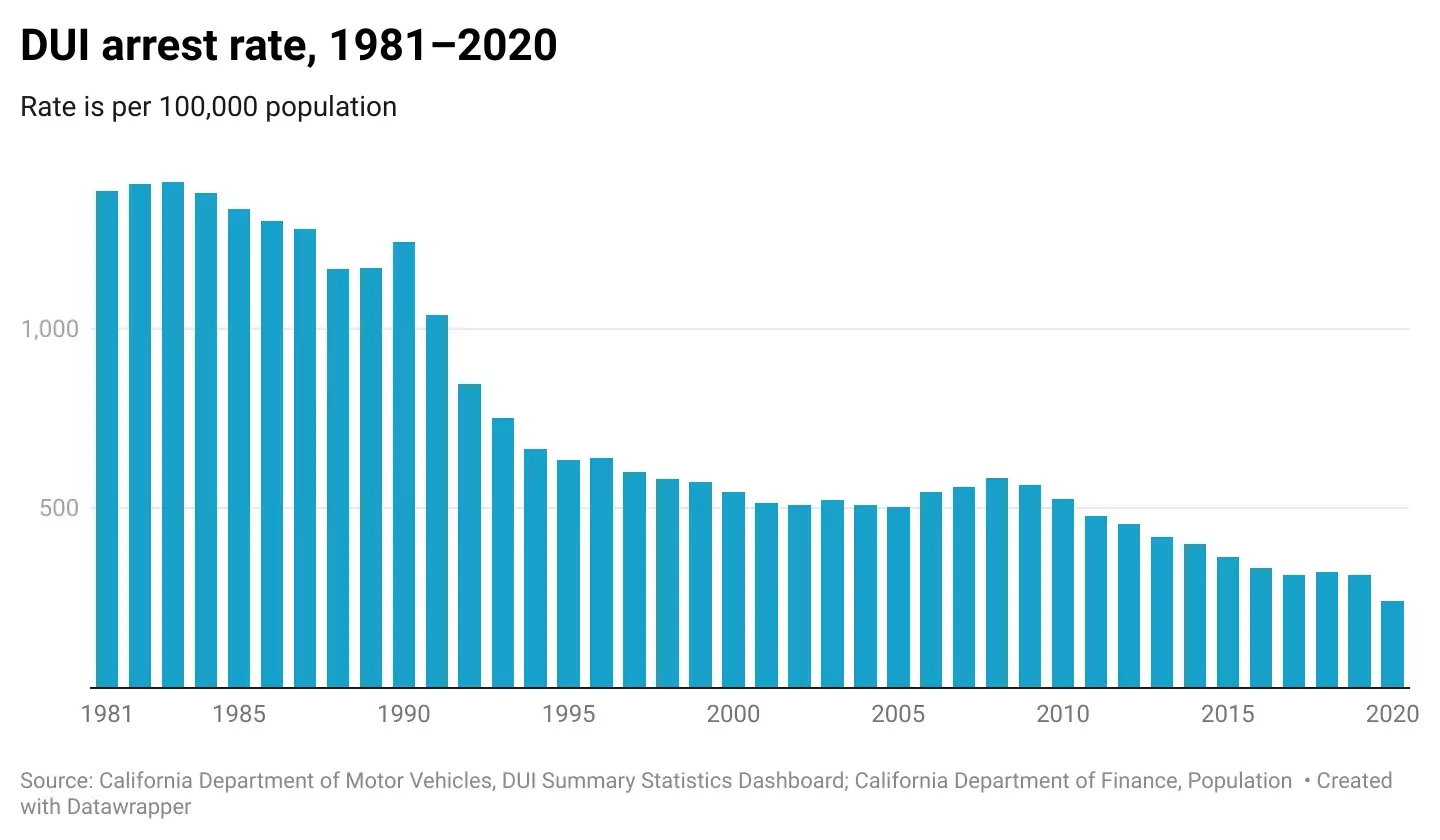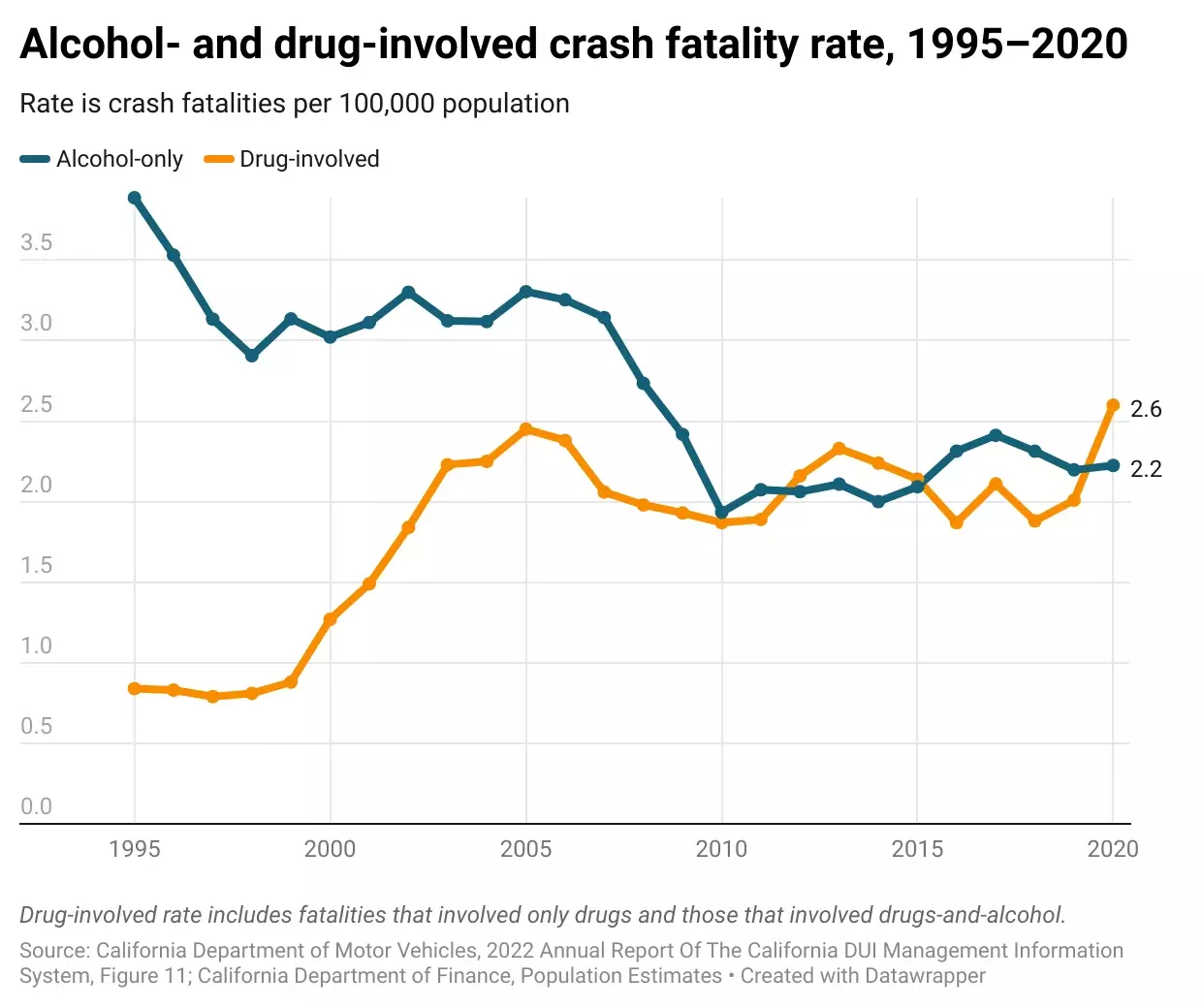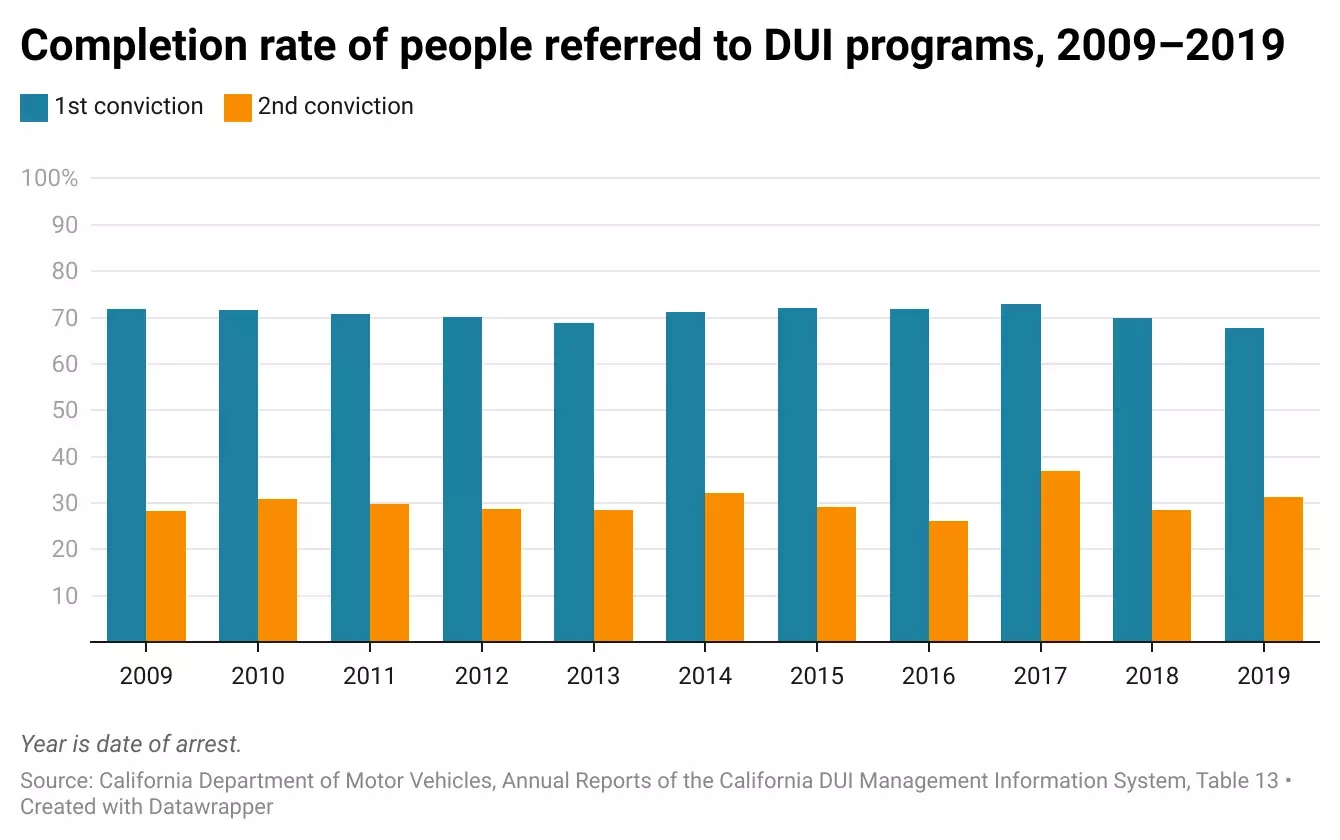Last Updated on April 27, 2024 by DALA Guest Author
In March 2024, the Committee on Revision of the Penal Code aims to address key concerns surrounding DUI regulations. The primary goals include enhancing public safety, reducing needless incarcerations, and fostering equity in the judicial handling of DUI cases. This will involve a thorough review and potentially transformative recommendations for the state’s approach to DUI offenses. This article summarizes http://www.clrc.ca.gov/CRPC/Pub/Memos/CRPC24-01.pdf
California DUI Data and Trends
Historical Arrest Trends
Over the past three decades, California has seen a dramatic decrease in DUI arrests—from nearly 270,000 in 1990 to just 100,000 in recent years. Such reductions reflect improved enforcement and evolving societal attitudes towards drunk driving. Additionally, the reoffense rate among those convicted of their first DUI has halved since 1990, indicating increased effectiveness of penalties and rehabilitative measures.
Demographics of DUI Arrests
DUI arrest demographics reveal a concerning overrepresentation of young men and minority groups. Specifically, men constituted nearly 80% of DUI arrests in 2020, with significant proportions of these arrests involving individuals under the age of 40. Moreover, Hispanic and Black individuals are arrested at rates disproportionate to their population numbers, highlighting potential areas for policy refinement to ensure fairness and prevent biases in enforcement practices.
Examination of Current DUI Laws
Legal Framework and Implications
Under current California law, driving with a BAC of 0.08% or higher is automatically deemed a DUI offense, as stipulated by Vehicle Code § 23152(b). This legal threshold aims to provide a clear, enforceable standard; however, it does not account for individual variation in impairment levels, which can start at lower BAC levels. The law also sets stricter BAC limits for commercial drivers and minors, emphasizing a tougher stance on these more sensitive categories.
Consequences of DUI Convictions
The legal consequences for DUI convictions vary widely, ranging from administrative penalties like license suspension to criminal charges that can escalate to felonies based on the offense history and severity of the incident. Notably, nearly 70% of DUI arrests lead to convictions, demonstrating the system’s capacity to hold offenders accountable while also highlighting the need for continuous evaluation of the proportionality and effectiveness of DUI penalties.
Insights from Research on DUI Prevention
Impact of BAC Limits on Road Safety
Research strongly supports the notion that lowering the BAC limit to 0.05% could significantly decrease fatal alcohol-related crashes. This potential policy change is backed by studies showing that even modest reductions in BAC can substantially reduce the risk of serious accidents, underscoring the need for laws that better reflect the relationship between alcohol consumption and driving impairment.
Role of Ignition Interlock Devices (IIDs)
IIDs have proven to be highly effective in reducing repeat offenses among DUI convicts. By requiring a breathalyzer test before the vehicle can start, IIDs act as a strong deterrent against recurrent drunk driving. Studies have highlighted that while IIDs are in use, they dramatically lower the likelihood of reoffense, affirming their value as a preventive tool in DUI management.
Staff Recommendations for Legislative Action
Proposing a Lower BAC Limit
The committee recommends that California align its DUI laws with scientific findings by reducing the per se BAC limit to 0.05%. This adjustment would reflect the lower impairment thresholds identified in recent studies and could lead to a significant drop in alcohol-related fatalities.
Enhancing DUI Courts
There is a strong advocacy for expanding the use of DUI collaborative courts, which have been effective in curbing DUI recidivism through comprehensive monitoring and personalized intervention plans. These courts integrate substance abuse treatment with legal supervision, offering a rehabilitative rather than purely punitive approach to DUI offenders.
Streamlining the License Suspension Process
To simplify the legal aftermath of DUI arrests, the committee suggests revising the license suspension protocol to eliminate redundant suspensions. This would make the process more straightforward and less burdensome for offenders, thereby facilitating compliance and reducing administrative overhead.
Conclusion
Addressing DUI offenses in California requires a nuanced approach that balances strict enforcement with equitable treatment. By integrating the latest research into legislative reforms, California can continue to lead in reducing DUI incidents and enhancing road safety. The Committee on Revision of the Penal Code’s recommendations lay the groundwork for meaningful change that respects both public safety imperatives and individual rights.
- Los Angeles DUI News March 26 to April 30, 2024 - April 30, 2024
- Detailed Legal Analysis of California Assembly Bill 3234 - April 26, 2024
- Comprehensive Overview of DUI Policies and Trends in California: Staff Memorandum 2024-01 - April 23, 2024



